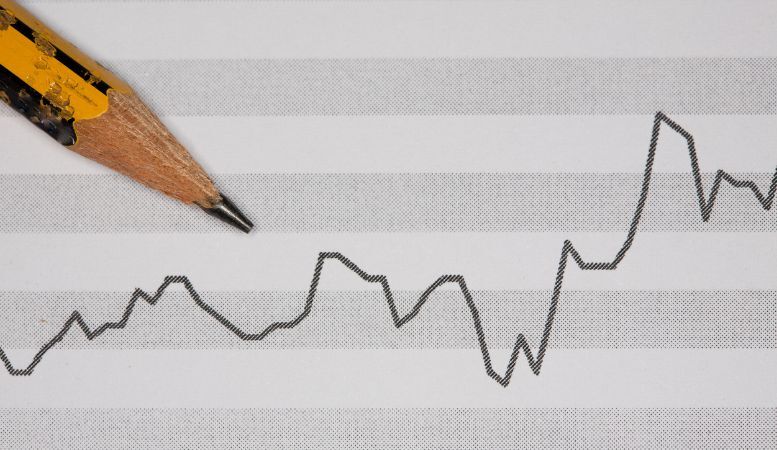Table of Contents
If you’re considering investing in gold, nearly every article you read online will tell you that the shiny precious metal acts as a premier hedge against inflation. Gold as an inflation hedge sounds wonderful, but is this true, and how does it work in practice?
Before investing in anything, particularly physical products requiring expensive storage, you must weigh the potential advantages and risks. Below, our team from Oxford Gold Group discusses the role of gold in inflation hedging. For support on your investment decisions, please consult your financial advisor.
Why Is Gold Considered an Inflation Hedge?
Many investors, major enterprises, and even central banks see gold as the ultimate safe-haven hedging tool against inflation. People have used gold for thousands of years to store value. Today, gold serves many purposes as a tangible asset, with demand coming from the jewelry, industrial, investor, and central bank sectors.
Because of its extraction methods and inherent qualities, gold has a limited supply yet constant demand from numerous sources. For example, nations like China consumed over 1,000 metric tons of gold last year to fulfill cultural demand from jewelry buyers. At the same time, central banks purchased 1,037 tons of gold last year alone to protect their wealth, combat the U.S. dollar, and hedge against inflation.
Gold acts as an inflation hedge because its physical qualities, stable demand rates, and limited supply allow it to remain valuable as the U.S. dollar falters. Gold and the U.S. dollar have an inverse relationship. When the U.S. dollar loses value, people often turn to gold to preserve their purchasing power, as gold remains stable and even gains value during inflationary periods.
Historical Evidence Supporting Gold’s Role

If you’re considering investing in gold for inflation protection, looking at the hard evidence supporting its performance can aid your decision. Viewing its previous performance rates during inflationary periods gives you a better understanding of how it may react to future financial conditions.
Let’s start by rewinding to the 1970s. Between 1973 and 1979, U.S. inflation rates spiked to 8.8% amid high oil prices and energy shortages. During that six-year period, gold offered an impressive 35% annual return rate as the U.S. dollar lost value each year.
A prime example of gold as a safeguard against inflation is the 2008 Great Recession. Between 2007 and 2011, the stock market collapsed, the financial crisis emerged, and gold nearly doubled in price in just four years.
When we look at more recent evidence, the pattern continues. During the 2020 COVID-19 pandemic, gold gained over 25% in just one year. In 2023, inflation ranged from 3% to 6% and gold gained over 15%, reflecting a record-high year-end price amid the soaring rates.
Is Gold a Reliable Long-Term Hedge Against Inflation?
Yes, gold typically works best when held long-term, so it can be a reliable tool for hedging against inflation over many years. While the asset does dip in price when certain factors pressure its performance, it tends to appreciate consistently on a larger scale.
For example, if you purchased one ounce of gold in 1990, you would have spent roughly $850. Today, 34 years later, you could sell that ounce for over $2,000, reflecting a 135% gain.
Between 1990 and 2024, the U.S. dollar had an average inflation rate of 2.54% per year, or 134.69% for the entire period. Based on this data, gold’s appreciation rate over the last 34 years has successfully outperformed the U.S. dollar’s price gain, meaning you can use gold as an inflation hedge during long periods. Today’s dollar only allows you to buy 42.5% of what you could in 1980, though a gold investment would offer stored value.
Even if we scale the period down to one decade, gold still provides consistent upward movement. In 2014, one ounce of gold would have cost you around $1,240, so you would still be able to profit $800 from your investment today.
Investment Strategies With Gold in Inflationary Times

You must consider your strategy if you want to use gold as a hedge against inflation. Here are some inflation hedge strategies with gold to think about:
- Buying during a bear market: When inflation runs high, people often scramble in search of ideas to protect their wealth. Unfortunately, if inflation levels are already high and gold is performing well, you will likely see fewer returns on your investment. To avoid this, many investors wait for gold to reach a bear market so they can buy in while prices are low for potentially higher returns.
- Short- versus long-term investments: You can use gold as a short- or long-term inflation hedge, depending on your market knowledge, financial goals, and risk preferences. The strategy you choose will dictate when you need to buy and sell your products and the types of products you should buy.
Overview of Different Types of Gold Investments
When using gold to protect against inflation, you have quite a few options to choose from, including the following:
- Gold bullion: Physical gold provides excellent tangibility but has complex storage requirements. We offer a range of high-purity gold bars and coins at Oxford Gold Group.
- Retail gold products: Retail products, like jewelry, are typically less pure and may not store value as well, but can offer easier storage.
- Gold futures and options: Gold trading instruments allow you to trade gold passively without dealing with storage requirements.
- Gold securities: Gold securities, like mining stocks or ETFs, allow you to invest in products related to the gold industry, though you often face increased counterparty risks.
- Gold IRAs: Gold IRAs offer a long-term tax-advantaged gold investment strategy. At Oxford Gold Group, we streamline the gold IRA process for you, offering rollovers, IRS-approved gold products, and a buyback program when you’re ready to retire.
Advantages of Using Gold as an Inflation Hedge
Gold as an inflation hedge can provide numerous advantages, including the following:
- Increased purchasing power: Hedging against inflation with gold can increase your purchasing power as the U.S. dollar loses value.
- Portfolio diversification: Allocating some of your funds toward gold can protect your wealth if your other investment classes fail during poor financial periods.
- Minimal counterparty risks: Because gold is a physical asset with limited supply, it has minimal counterparty risks, so you can rely on relative price stability.
- Flexible investment options: If you want to avoid the hassle of storing physical gold, you can choose from numerous gold investment options, depending on your comfort level and financial goals.
Risks and Limitations of Using Gold as an Inflation Hedge

Gold comes with a few risks and limitations when hedging against inflation. To start, central banks like the U.S. Federal Reserve tend to increase interest rates to combat inflation.
When interest rates begin rising following high inflationary periods, gold prices often dip as high inflation rates reduce the opportunity costs of investing in non-yielding assets like gold. Because of this, short-term inflation hedging strategies with gold can become quite complex as you balance gold’s reactions to inflation rates and monetary policies.
Another limitation of using gold as an inflation hedge is its storage requirements and liquidity. Physical gold typically requires professional storage or expensive at-home vaults and insurance. Trading physical products can also take longer, so you will not enjoy total liquidity.
Gold vs. Other Inflation Hedge Assets
Gold isn’t the only tool people use to hedge against inflation. Here are some other popular options:
- The S&P 500: A group of stocks that may show extreme volatility in the short term but typically provide excellent long-term returns
- Real estate: Can provide long-term yields but comes with a large upfront investment and requires ample market knowledge and time for property management
- Cryptocurrencies (like Bitcoin): May offer phenomenal returns but can be extremely volatile and hard to predict
Be sure to seek the proper financial advice before embarking on any of these routes.
Are You Interested in Hedging Against Inflation With Gold?
If you want to use gold as an inflation hedge, we can help. Shop our selection of high-purity gold products or call Oxford Gold Group today at (833) 600-GOLD to learn more about our gold IRAs.








